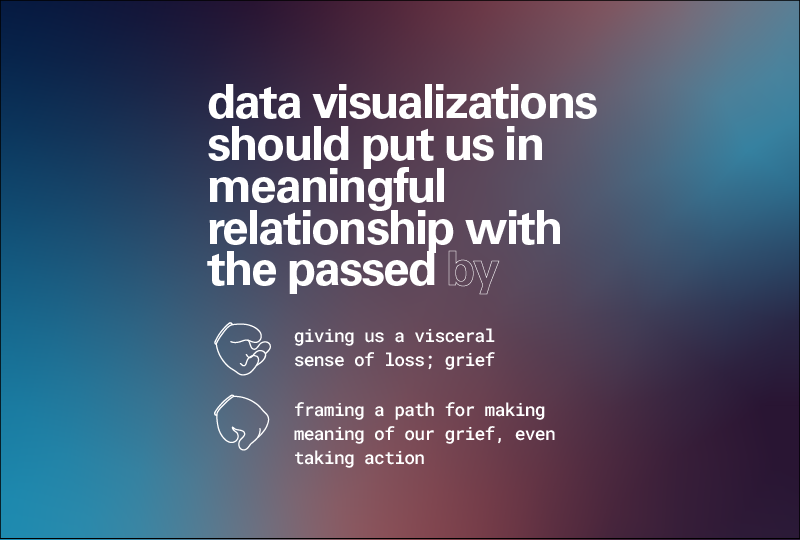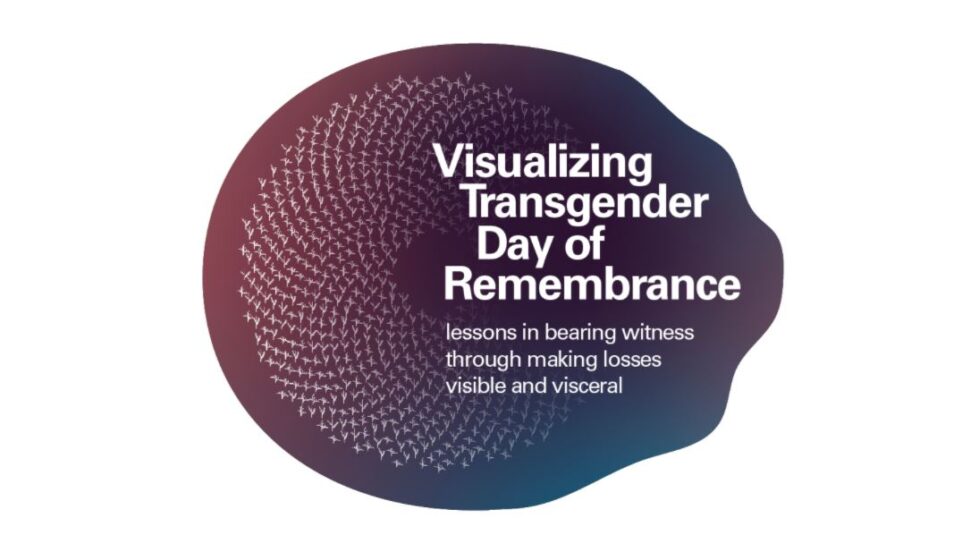Gayta Science’s Cathryn Ploehn and Kelsey Campbell were part of a rockstar lineup of data practitioners and designers at the Data Visualization Society’s first-ever Outlier Conference! While the conference as a whole was a high-energy three days of inspiring visualization talks and networking, Gayta Science brought a serious and thought-provoking talk about our experience visualizing anti-trans violence.
Visualizing Transgender Lives Lost
Every year for Transgender Day of Remembrance (TDoR), we build on the incredible monitoring work of Transgender Europe (TGEU) and Anna-Jayne Metcalfe’s TDoR website to release a data visualization to both honor victims and call attention to the continued violence against the transgender and gender-diverse communities. While this visualization is a good start in making this data more accessible and visible to the general public, we sought options for data visualizations that also bring feelings of grief, loss, and meaning.
Our Outliers talk and Project Page share the process and findings from our ongoing research and questioning of what type of role data visualization can and should play in communicating the complex feelings of grief, loss, and anger that accompany death. This is important in the context of anti-trans violence, but also highly relevant in today’s world of COVID-19 charts. A sense of humanity is often lost in visualizations employing neat categories and disembodied, geometric representations of the dead—evoking a sense of analysis and numbness in a moment of loss that also deserves weight and grief. In our talk, we pointed towards how one might construct a data visualization that lets us live in good relationship to the dead represented as data: to bear witness to the gravity of that loss, and reinstate value in lives taken. Even further, we explored how data-driven, interactive storytelling may help us hold the weight and grief of the deaths made visible and visceral.

You can watch a recording of our talk or read through our process in the accompanying write-up. The impressive visuals and engaging movement in the presentation definitely resonated with the Outlier’s audience, and we received a number of interesting questions about our process and future plans. As we continue to explore ways to visceralize loss through data visualization, we humbly work toward a vision to beautifully honor trans victims, help the community grieve, and continue the movement for trans liberation.



